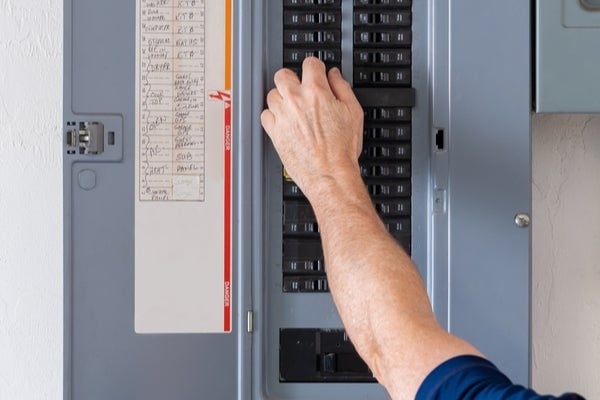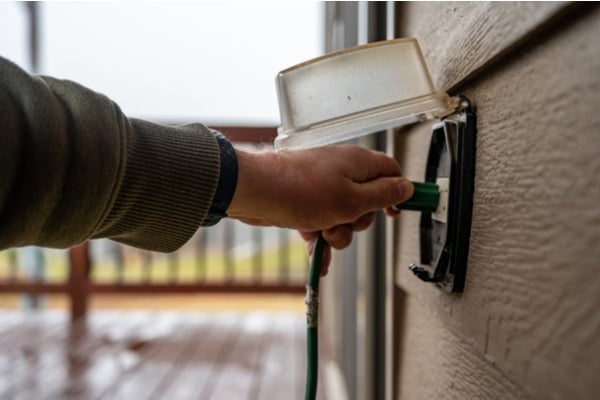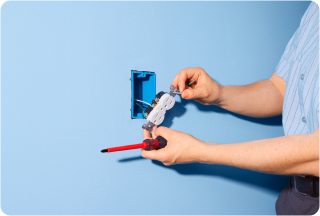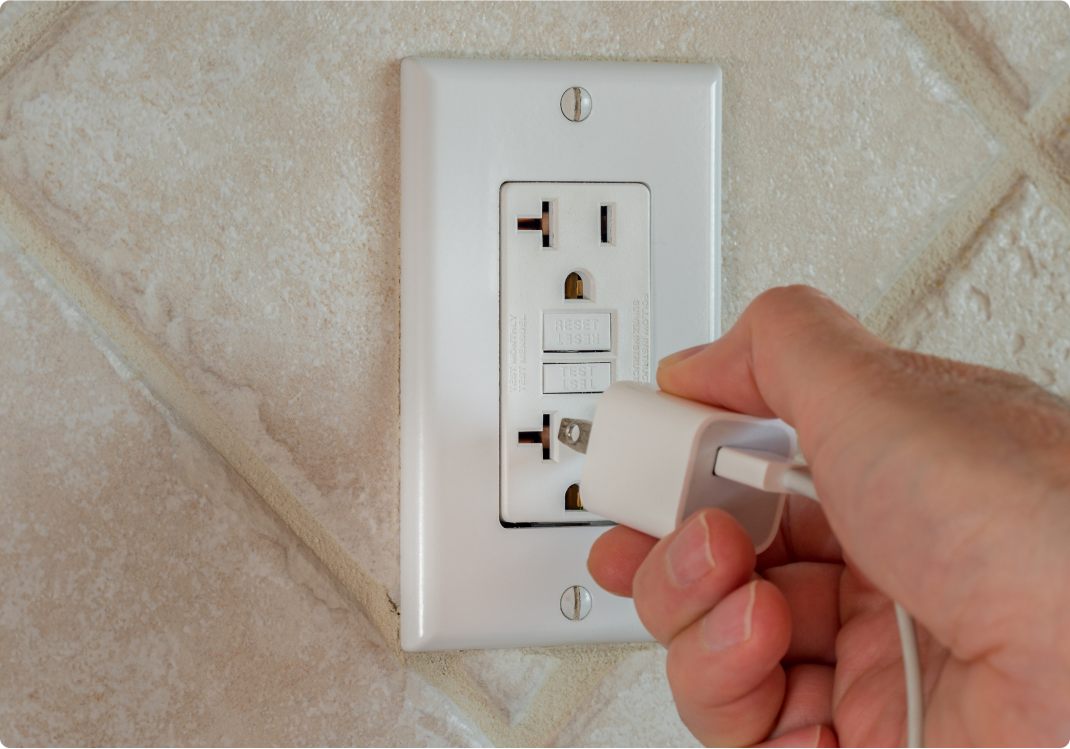An outdoor electrical outlet in your yard provides you with convenience and plenty of fun options. The ability to plug in outdoors can mean summer nights spent watching movies on a projector under the stars, a mini-fridge stocked full of cold drinks, and a holiday lights display that dazzles the neighborhood. Let your outdoor lighting ideas run wild.
An outdoor outlet also makes yard maintenance easier since it allows you to use plug-in yard tools without having to finagle a dozen different extension cords. Instead of tripping over multiple cords running from your home, consider installing a new outdoor outlet in your yard. Adding an electrical outlet is a simple installation process as long as you have an interior outlet or circuit that you can access and tap into. Just follow these guidelines, and you’ll have a handy outdoor electrical box in no time.
Choose where you want your outlet to go.
The easiest place to install an outdoor outlet box is on the other side of the wall from an interior outlet because an interior outlet provides a good place to tap into an electrical circuit in your home.
Avoid kitchen and bathroom circuits as well as any specialized circuits that power large appliances, like your washing machine and dryer, or home systems, like your air conditioning unit and heater. Most building codes prohibit you from using these sources since adding an outdoor outlet to these circuits can trip the circuit breaker.
When you decide where to put your outdoor outlet, it’s a good idea to use a voltage tester to make sure that the indoor outlet is working properly.
If you don’t have an interior outlet near the location you have in mind for your exterior outlet, that’s okay. One alternative is to tap into a basement junction box. To do so, first make sure that you’re using a living room, basement, or bedroom circuit. Then, you can drill through the rim joist and siding and run the cable through to the exterior wall, making sure to enclose the cables in a metal conduit.
Cut off your power.

Before you begin to install the electrical outlet, make sure that you turn off the power at your circuit breaker. After flipping the switch on your circuit breaker, use a voltage tester on the interior outlet or junction box to double-check that it is no longer live. If other people have access to your home, you should put a note on the circuit breaker so that someone else doesn’t turn the power back on while you’re tapping into the outlet.
Remove the indoor outlet.

Once you confirm that the indoor outlet no longer has power, it’s time to remove it from the wall.
- Unscrew and remove its wall plate using a screwdriver.
- Unscrew the outlet receptacle and pull it gently from the wall.
- Disconnect the wires and then push them to the side and out of your way. Check that the electrical box big enough to add outdoor electrical wires. If your electrical box is too full, it’s a fire risk, and you’ll need to find another spot for your outdoor electrical box.






